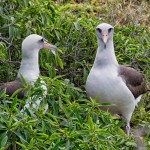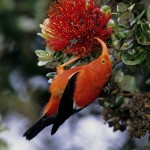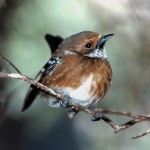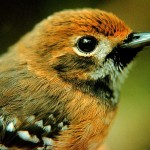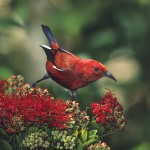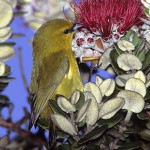
**IMPORTANT PARK NOTICES**
Monitor weather reports before your park visit.
•
[KAUA’I] UPDATE 12/18/25 Kalalau trail has REOPENED.
•
[OʻAHU] UPDATE 12/15/25 — Ka\'ena Point State Park: Mokulē\'ia Section Vehicle Access Gate is temporarily CLOSED due to saturated road conditions.
•
[ALL ISLANDS] UPDATE – 12/12/25: Camping - Reservations for February 1, 2026 and beyond available at https://explore.ehawaii.gov, please create an account on Explore Outdoor Hawaiʻi to make a camping reservation.
Hawaiʻi’s Birds
Posted on Oct 23, 2014Hawaiʻi is home to a diverse variety of native and endemic birds, as well as a myriad of historically introduced species. Due to a variety of factors including development, loss of native forest lands, and introduced avian diseases, we are facing an extinction crisis, especially for Hawai‘i’s endemic Forest Birds. Many have already disappeared, and others are critically endangered. For those that remain, Hawaiʻi’s protected parklands and forest reserves provide safe haven and unique opportunities to catch a glimpse of these uniquely adapted species’ found nowhere else in the world.
Seabirds
Seabirds, including wedge-tailed shearwaters, noddies, and Laysan Albatrosses nest in selected coastal locations on the main Hawaiian Islands, and in much greater numbers on a myriad of offshore islets, most serving as wildlife sanctuaries. Other species, such as white and red-tailed tropicbirds, and great frigatebirds can be seen soaring overhead along coastlines and cliffs.
Ground-nesting seabirds are especially vulnerable to human disturbance. When visiting nesting areas, please observe all signs and barriers, and stay on established trails. Nests are often nearly invisible to hikers.
Forest Birds
Hawaiʻi’s endemic forest birds are typically limited to higher elevations where more undisturbed stands of native forest remains. Commonly viewed species include the crimson and black-colored, salmon-billed i‘iwi, the similar colored, black-billed ‘apapane, the yellow-green ‘amakihi, and the brown and white ‘elepaio.
To increase your chances of seeing these rare birds, bring along a pair of binoculars. Look for flowering native plants and trees which provide food to native honeycreepers. Stop, sit quietly, and listen for calls. Find a high vantage point and look for movement in the treetops.
Nēnē
Hawaiʻiʻs State bird, the nēnē, or Hawaiian goose, nearly went extinct in the mid 20th century. Down to just 30 living birds around 1950, a program to help the species recover has been very successful. In addition to wild populations on the Big Island, reintroduced populations now inhabit Maui and Kaua’i.
In addition to the above, many migratory and resident shorebirds and marsh birds are found in Hawaiʻi, as well as numerous historically introduced species, from cardinals to cockatoos. These introduced birds dominate in urban and lowland settings. To see the true natives, visitors must seek protected and preserved areas like our state parks. And forest reserves.
